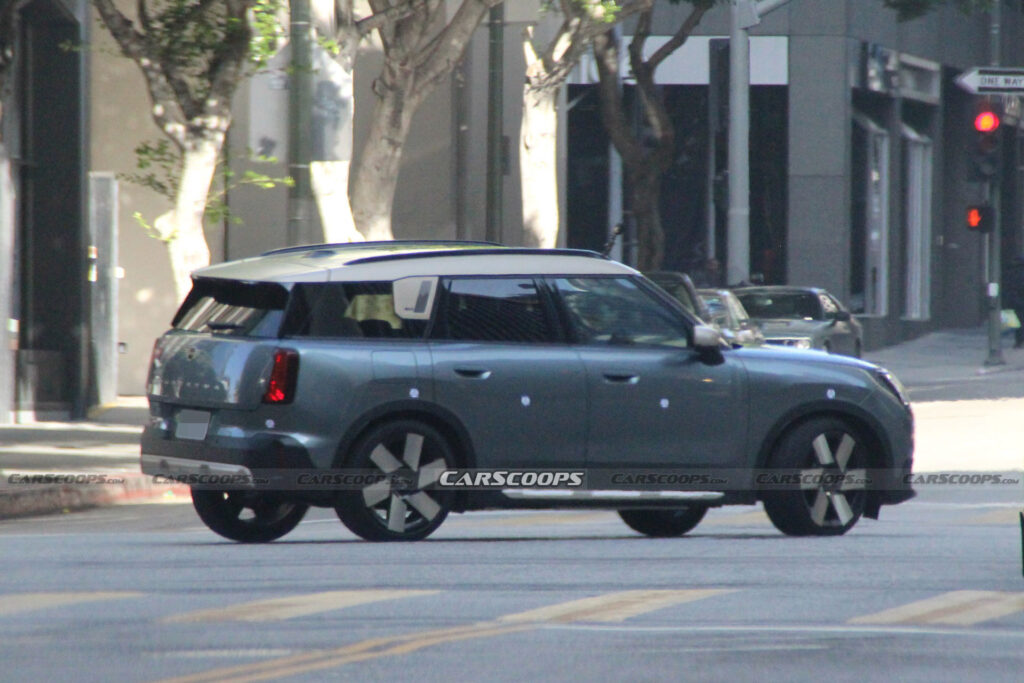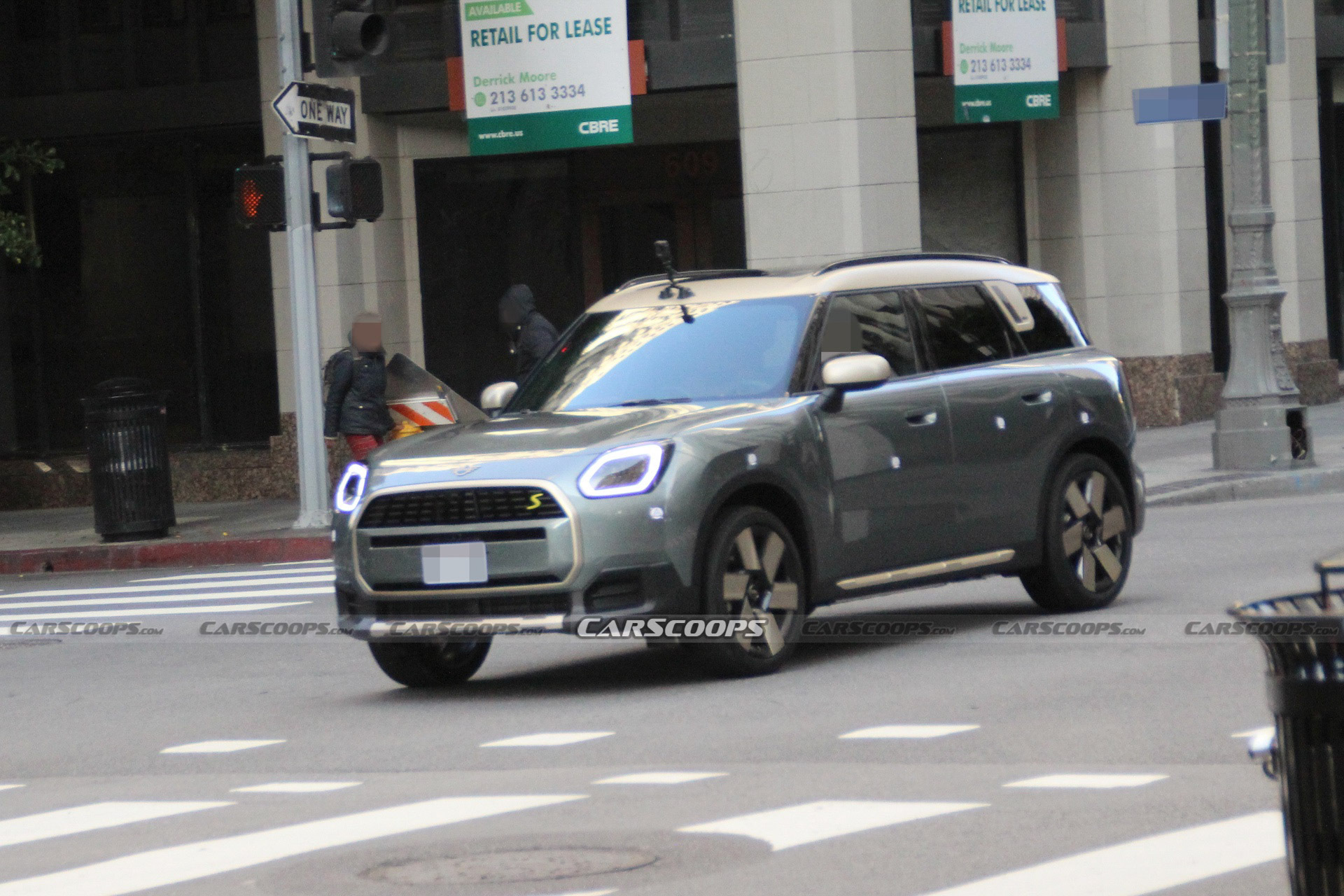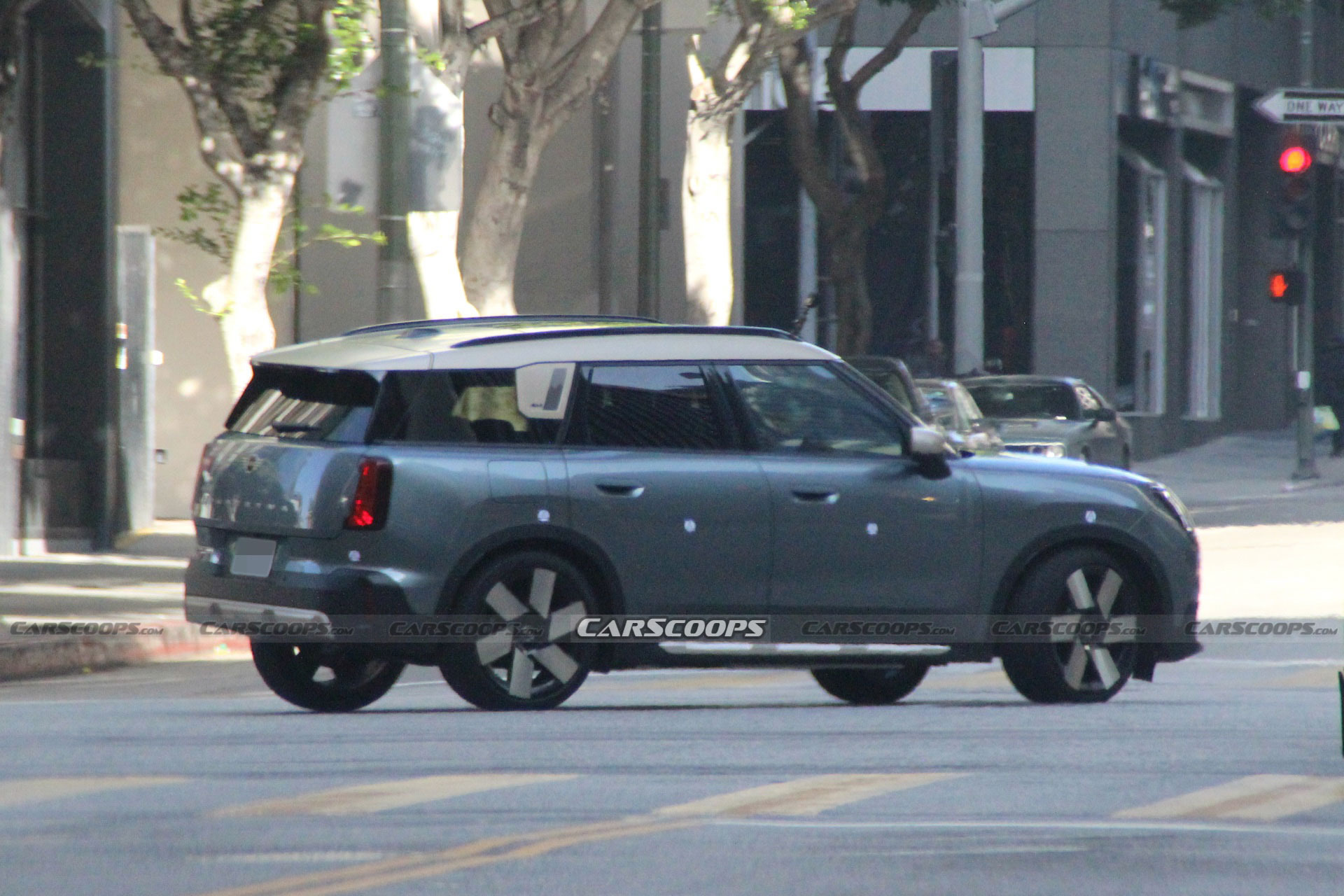The name might suggest green fields and country lanes, but the Mini Countryman’s more natural habitat is covered in asphalt and concrete, not grass. And that’s where our spy photographers snapped the third-generation car as it posed for advertising pictures.
These first images of Mini’s most family-friendly car without any disguise reveal a design that’s recognizably a Countryman, but looks significantly more glamorous than before. The grille, lights, and body panels have a blockier, less curvy look, there are flush door handles and an interesting piece of silver trim behind each C-pillar that helps break up the expanse of black privacy glass to stop it looking like a Ford Flex and is vaguely reminiscent of a styling trick used by Land Rover on the Defender.
Mini has some big changes in store for the BMW X1-based Countryman, including moving its production base from the UK to Germany. But of more importance to car buyers, the Mk3 will be the first iteration to offer a fully electric drivetrain. ICE options will remain on the table, but the plug-in hybrid has been chopped.
The new Countryman will come in two fully electric versions, both powered by a 64.7 kWh battery giving a driving range of up to 280 miles (450 km). The Countryman E gets a single electric motor producing 188 hp (140 kW / 191 PS), while the all-wheel drive Countryman SE ALL4 will feature dual electric motors for a combined 308 hp (230 kW / 313 PS).
Related: 2025 Countryman Will Be The First MINI Made In Germany, EV Versions Pack Up To 308HP

With no other cars nearby it’s difficult to gauge the dimensions of the new model in these pictures, but Mini has already confirmed that the third-gen Countryman measures 174.4 inches (4,429 mm) long, making it around 5 inches (130 mm) longer than the outgoing SUV. It’s taller too, the roof stretching upwards by an additional 2.4 inches (60 mm) to improve headroom for passengers.
Other interior advances will include greater use of sustainable materials, the dashboard, steering wheel, headliner, floor, and floor mats made from PET bottles and carpet remnants, though the most obvious change is to the design of the instrument display and multimedia screen. Mini has retained a handful of physical buttons, but most functions will be operated through the large, slim, circular infotainment system, while the small digital gauge cluster is backed by a head-up display.

















